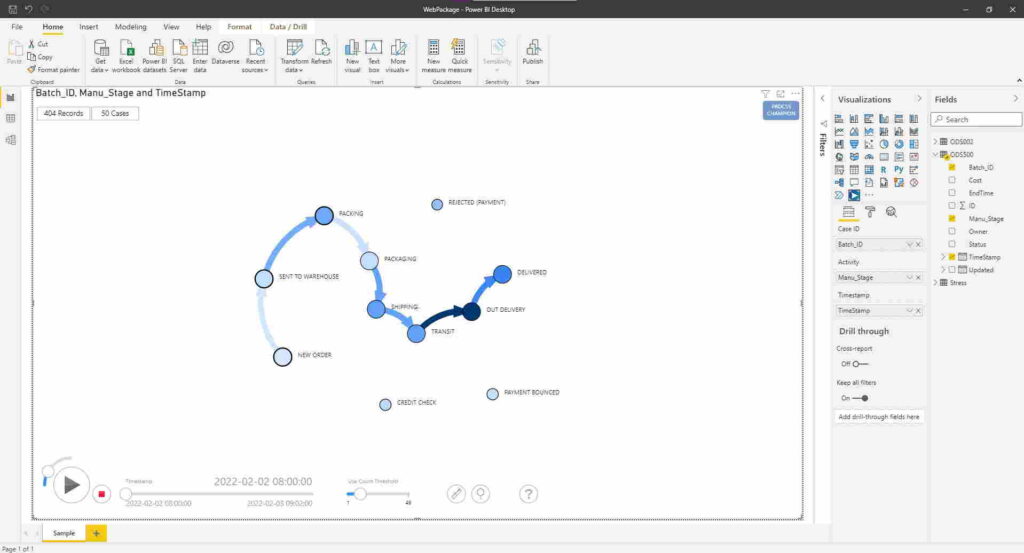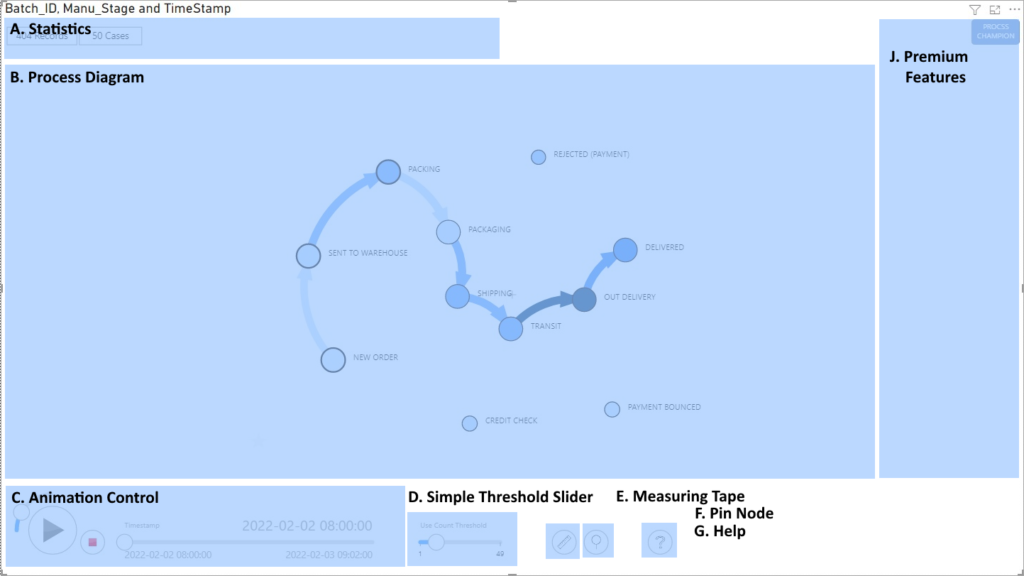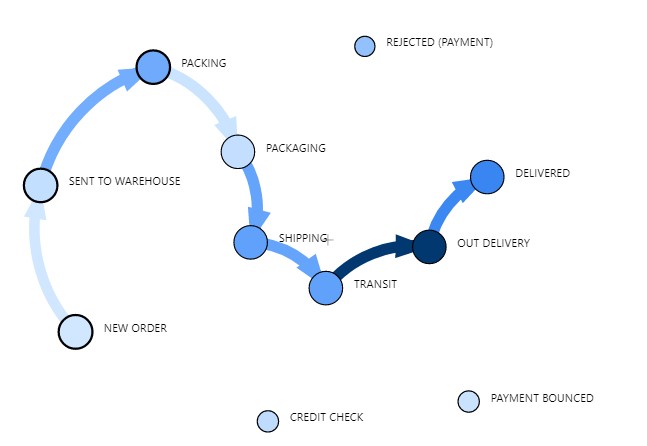Keywords: #ProcessImprovement #ProcessMap #HowTo #ProcessMining
Process Maps are graphical notations of your processes. Using process mining tools, you can automatically discover your processes without the need to model.
Automatically discovered process maps can be a great way to understand how things work in your organization. It helps in communication and conformance checking. In this article, we will find out how to automatically discover a process map using ProcessChampion.
Let’s go!
Initial Load

Congratulations. This is the default process map that is automatically discovered for you.
Let’s walk through some of the description and tools that can help you unpack even more.
Layout
Let’s get familiar with the layout of ProcessChampion on Power BI.

ProcessChampion has multiple regions on the user interface where you can interact and analyze data. The regions include:
A. Statistics – Shows the statistics of the Event Log file, including total records count and number of unique cases.
B. Process Diagram – The automatically discovered process map is shown here. The Circle (nodes) describe the Activities and the Lines (edges or links) describe there is at least one pair of events where a Case goes from Activity from to Activity to.
C. Animation Control – This is your main control for data animation, including Speed Control, Play/Pause, Stop and Timestamp
D. Simple Threshold Slider – This slider controls the Use Count Threshold. It visually connects or disconnects the links (Lines on Process Diagram) between activities (circles on Process Diagram). Basically, it looks at how many times a link is used, and use the slider to show or hide (lesser used links). This is great for finding activity relationships which are more used than others.
E. Measuring Tape (On/Off, Shortcut Key CTRL) – This allows you to measure average time and utilization across ANY two activities (nodes).
F. Pin Node (On/Off, Shortcut Key SHIFT) – This allows you to move and hold the Nodes in place. This is useful when you want to move the activities around for different views.
G. Help – Takes you to the User Guide section.
J. Premium Features – This contains the menu when Premium features are activated. For this article, we can do everything with the free edition.
Reading Process Map
The main visual on ProcessChampion is the Process Diagram. You can see it uses two major graphical notations:
- A circle ◯ known as a node, which describes an activity . It is accompanied by a text label.
- An arrow link → (line between two circle) known as an edge, which describes the relationship between two activities. Note: The direction of the arrow is important, symbolizing a From/To relationship.

The process diagram is automatically discovered (or mined ⛏️) using the event logs.
Activities (Circle, Nodes)
Activities are illustrated by the circles in the diagram. Using our sample data, we can see that there are a total of 11 unique activities.
- NEW ORDER
- SENT TO WAREHOUSE
- PACKING
- PACKAGING
- SHIPPING
- TRANSIT
- OUT DELIVERY
- DELIVERED
- REJECTED (PAYMENT)
- CREDIT CHECK
- PAYMENT BOUNCED
The total number of circles describing these activities are mined directly from the event log. All activities are shown.
Note: For performance and analytical reasons, you may want to introduce a soft cap to the number of unique activities to about 50.
Links (Edge, Arrow)
A link between two activities (e.g. NEW ORDER -> SENT TO WAREHOUSE) show that there is at least one occurrence where a case (Entity) goes from activity from, to activity to. The direction of the arrow is important.